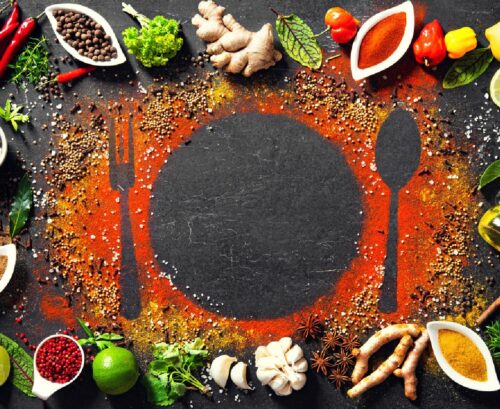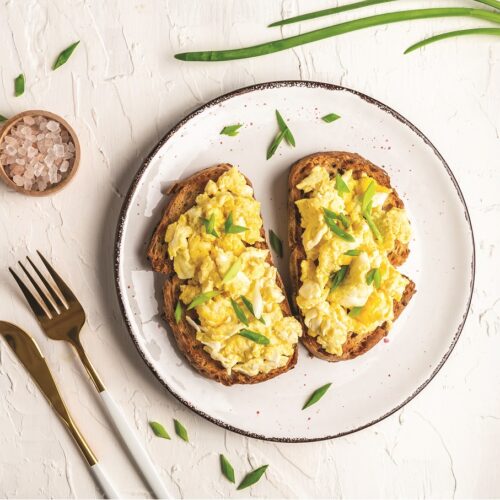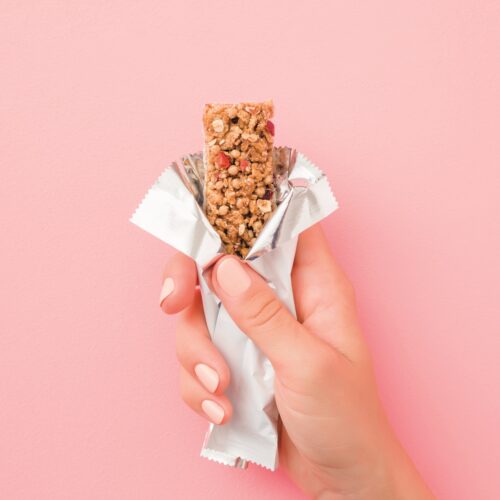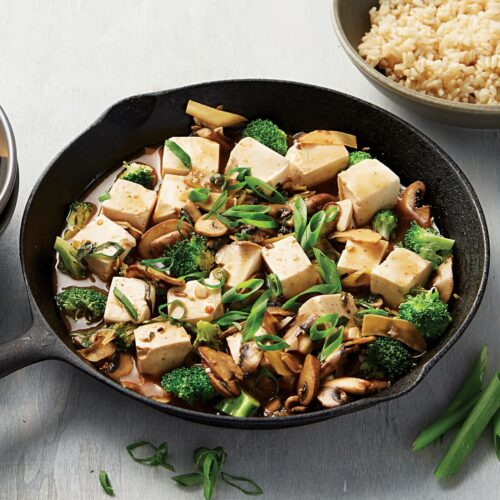
What’s big on flavour and low on kilojoules? Spices! HFG shows you the healthy way to take your meals from bland to BAM!
No matter how nutritious a certain food may be, we just won’t eat it if it doesn’t taste good. And when we hear the term ‘health food’, most of us think of boring salads or dry meals lacking in flavour — hardly appetising!
But the idea that flavour equals ‘bad for you’ is entirely unfounded. It’s actually very easy to boost the taste and health of everyday meals, and you don’t have to rely on salt, sugar and fat to do so. Spices are a kilojoule-free way to pack flavour into meals, but if you’re not accustomed to using them, knowing where to start can be a challenge. Read on for your complete guide to cooking with spices.
Herbs versus spices
Defining what is a herb and what is a spice can sometimes be tricky. Generally speaking, herbs are used fresh (the word comes from the Latin herba, meaning grass) and spices are dried. Most of the spices we use come from tropical plants — aromatic seeds, bark, fruit and buds that are dried and used whole or ground.
Some plants can be both a herb and a spice. Coriander is a good example as the leaves are used fresh and the seeds are used dried. Chillies, garlic and ginger also fall into this category. The spices we’re talking about here are the dried powders and seeds found in a typical spice collection at home or in the spice section of your local supermarket.
Storage solutions
Spices, especially ground ones, lose their flavour and aroma over time. Take a look at those spice jars and packets in your pantry — if they’re past their ‘best before’ date, you should throw them
out. As a general rule, don’t keep spices for longer than a year, and always store them in airtight containers to preserve their flavour better.
Whole or ground?
Spice experts believe spices can start losing their aroma within hours of being ground. For this reason, many recommend grinding whole spices as you need them to enjoy their best flavour. The difference between freshly ground black pepper and the pre-ground version is a good example of this. You can buy most spices whole, and grind them with a mortar and pestle or in a coffee grinder.
If you’re cooking Thai or Indian curries, grinding whole spices is definitely the best way to get great flavour. To enhance flavours further, try toasting or dry-frying certain spices, such as mustard and cumin seeds, before grinding them as the heat helps to release their volatile oils. You’ll often see this instruction in many recipes featuring spices.
For the majority of busy home cooks who are looking for a quick way to boost the flavour of a stir-fry, sauce or stew, pre-ground spices are a convenient option and, as long as the spice is fresh, provide good flavour. So don’t hesitate to stock up on ground spices at home and use them. You can also buy interesting pre-mixed spice blends, which are worth experimenting with.
As you browse the spice section of your local supermarket, you’ll see there are dozens to choose from. Because of their limited life span, however, there’s no point buying a spice unless you plan to use it. Here’s a good, basic selection of spices to have at home that allows you to cook a wide variety of tasty dishes.
Cinnamon
This spice adds a sweet, fragrant note to desserts and baking (and is a must when making apple pie or apple crumble). Cinnamon is also used in savoury Indian and Middle Eastern dishes. Ground cinnamon has more flavour than cinnamon sticks, which need to be broken to release their flavour.
Cumin (ground or whole)
Cumin has an earthy, slightly bitter flavour and is popular in South American, Middle Eastern, Moroccan and Spanish dishes. It’s an essential ingredient when cooking Mexican meals. Freshly ground cumin seeds have more flavour than ground cumin.
Allspice
Often confused with ‘mixed spice’ (which is actually a blend of allspice, coriander, cloves, mace, nutmeg and cinnamon), allspice is a peppery, warm spice that can
be used with cinnamon in sweet dishes and is common in savoury Middle Eastern dishes.
Ground ginger
This adds a pungent, warm and lemony note to sweet and savoury cooking. It’s great for using in fruit desserts and many biscuits, breads and cakes.
Black & white pepper
Although made from the same plant, black pepper and white pepper have different flavours but are both worth having in your spice collection. Black pepper is hot and pungent, making it the favoured spice for seasoning. White pepper is milder and more savoury, making it ideal to use in white sauces, mashed potato and chicken dishes. Get the best from both peppers by grinding whole peppercorns and using them fresh.
Paprika
The paprika you might have been familiar with is mild in flavour and often used simply to add a touch of colour to dishes. In recent years, we’ve been introduced to Spanish smoked paprika, which has an intense, smoky flavour and aroma. Although pricier, it’s worth having in your pantry because just a small amount can transform dishes ranging from soups to roasts, giving them a delicious, smoky barbecue flavour.
Curry powder
This is not powdered curry leaves, but a mixture of spices used to make curries and sauces. Curry powder was invented in the 18th century by Indian cooks working for British households to introduce these foreigners to local flavours. As well as being used to make tasty curries, they are great for adding flavour to dressings, sauces and soups.
Dried chilli flakes or powder
Add dried chilli flakes to sauces and pasta dishes just at the end of cooking to give them a dash of heat. Ground chilli powder is another easy way
to add heat to dishes.
5 Spice Hacks
- Don’t go overboard when using spices – a little goes a long way!
- Add spices early in the cooking process, such as when softening onions.
- Add a spice rub to add flavour to meats, just mix your spices with a pinch of salt and rub over meat before cooking.
- If you’re trying to convert someone to spiced dishes, go easy on chilli, and use aromatic spices instead.
- Regularly check what spices you have on hand – spices lose flavour over time
www.healthyfood.com










